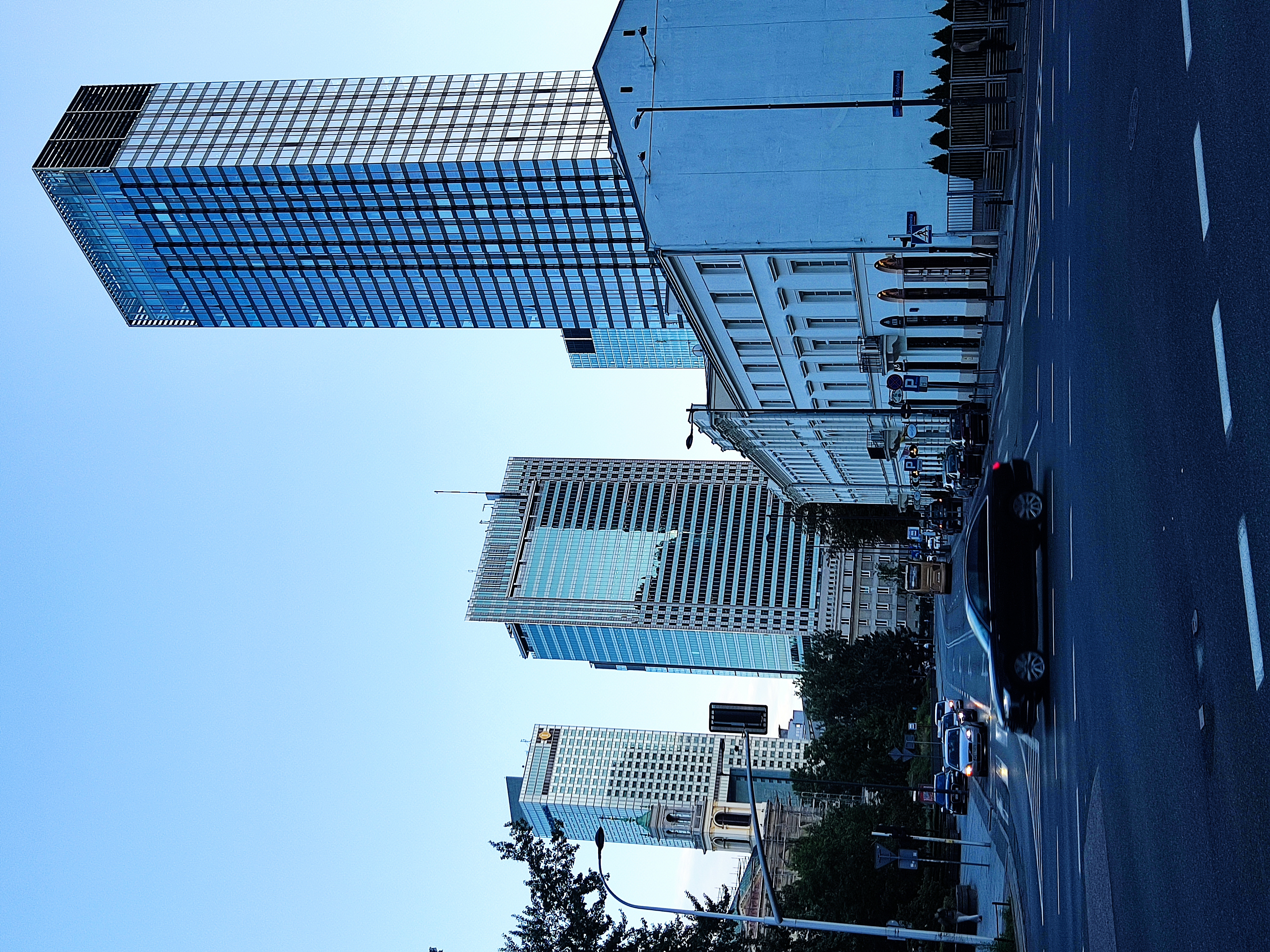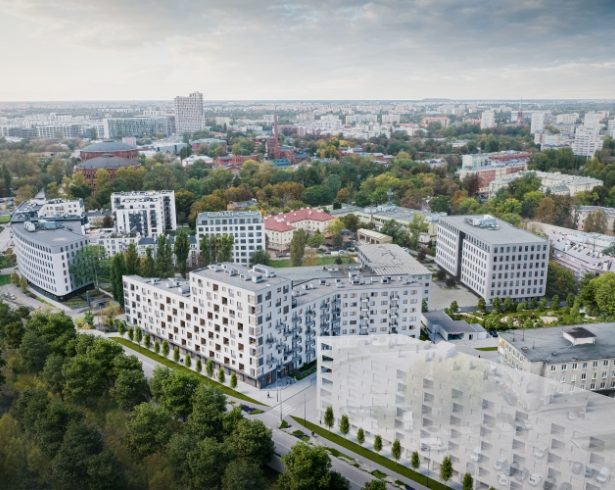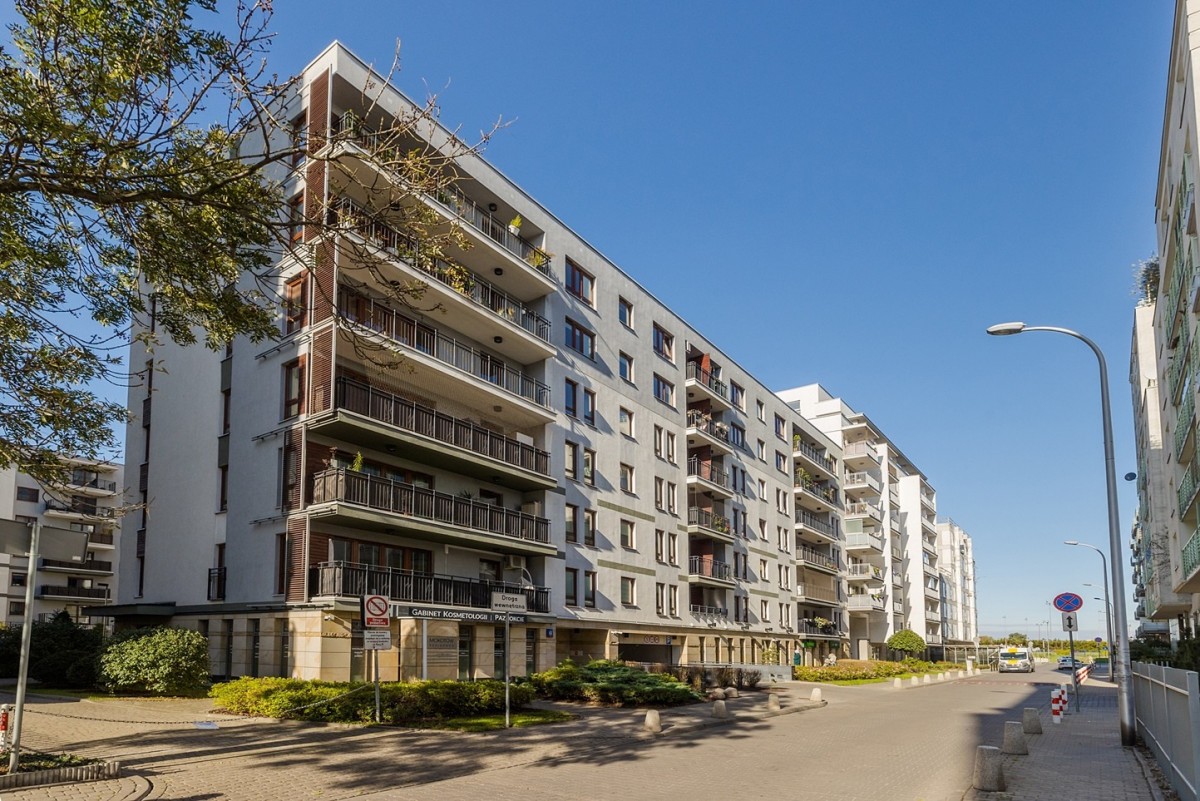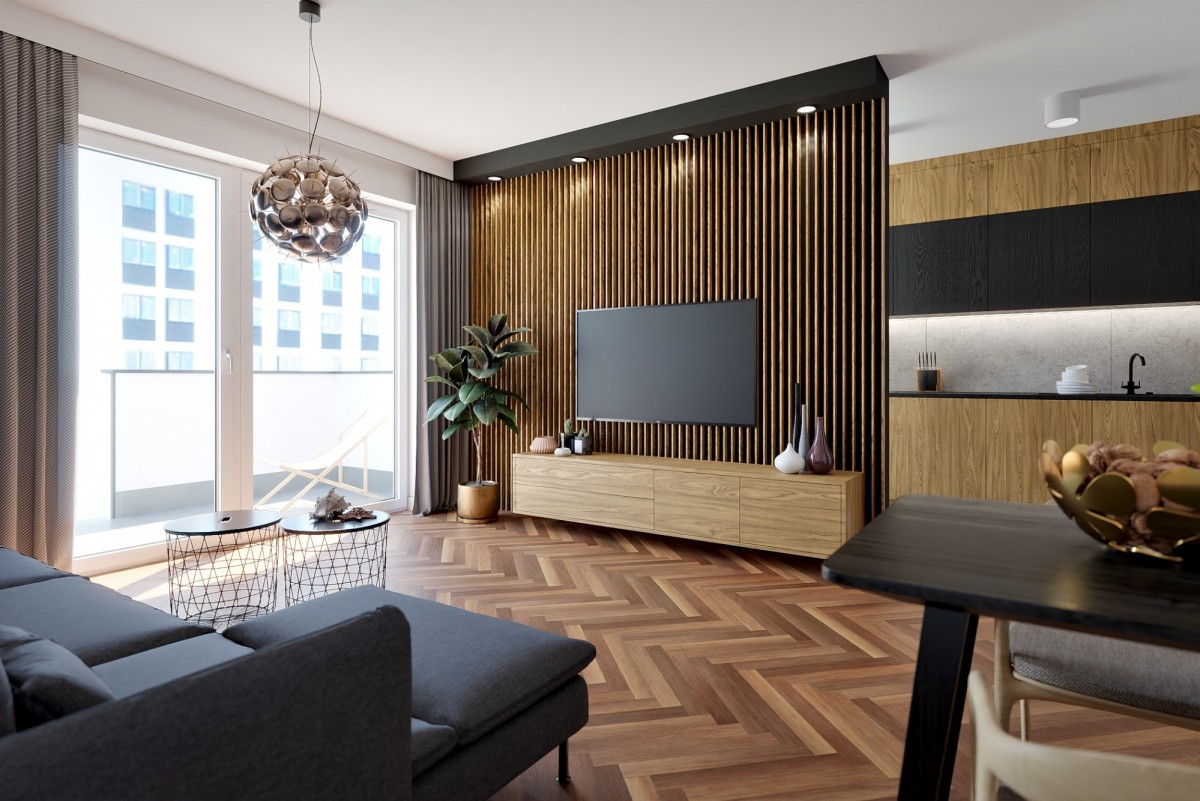The Śródmieście district in Warsaw

The Śródmieście district is the most representative part of Warsaw. It covers the territory of the very center of the capital, including Stare Miasto. Within Śródmieścija there is one of the most beautiful Warsaw parks - Łazienki Królewskie, the picturesque street Nowy Świat, the most famous buildings: Pałac Kultury i Nauki, Zamek Królewski, Teatr Wielki. Śródmieście also includes modern office buildings, hotels, shopping centers, museums, the most famous Warsaw theaters and the best schools in the capital. The most important state institutions are located here - the Seimas, the Presidential Palace, the Office of the Prime Minister and ministries. Dworzec Centralny connects Śródmieście with cities across Europe.
Srodmieście (Śródmieście) is located on the left bank of the city. This is one of the 18 districts of the capital. The population as of January 1, 2022 was 102 thousand inhabitants.
In addition to the name Śródmieście, the term Centrum is often used, which is understood as a smaller area than Śródmieście. The name Centrum is called the intersection of the street. Marszałkowska with Aleje Jerozolimskie (Dmowskiego roundabout). Signposts lead from this place and all distances from Warsaw are taken into account. In the western corner of the intersection (from the side of the Palace of Culture), the mileage is set, indicating the distances to the most important cities of the country and abroad.
The name Centrum is also used by the complex of bus and tram stops at this intersection and the nearby Centrum station of the first line of the Warsaw metro. Warsaw Central Station (dworzec kolejowy Warszawa Centralna) is located 500 meters from the Dmowskiego roundabout.
The term "Strict Center of Warsaw" is used to refer to the quarter of streets around the Palace of Culture and Science, bounded by the following streets: Marszałkowską, al. Jerozolimskimi, Emilii Plater and Świętokrzyską.
The Śródmieście district in Warsaw is one of the most picturesque and dynamic districts, which functions as a modern city center. It represents the historical center of Warsaw and includes many different elements of the modern territory.
Below are the main aspects of the functioning of the Śródmieście district:
I. Residential area:
Śródmieście is a residential area with a wide variety of housing developments. Here you can find both old historical buildings and modern residential complexes and skyscrapers.
In Śródmieście, the following neighborhoods (residential areas) built after World War II are distinguished:
Mariensztat is a residential complex located in Powiśle, the first post-war residential complex built in Warsaw in 1949.
Mirów - residential area in Wola and Śródmieście districts, built in 1949–1960.
Grzybów - residential complex in Śródmieście Północne, built in 1962-1967.
Marszałkowska Dzielnica Mieszkaniowa, MDM, built on the territory of południowego Śródmieścia in 1950 - 1952
Osiedle Torwar - a residential complex located in the Ujazdów microdistrict, built in 1971-1973
Latawiec is a historical housing estate, built on the territory of poludniowego Śródmieścia in 1953–1957 as an addition to Marszałkowskiej Dzielnicy Mieszkaniowej.
Stawki, Osiedle Stawki - a residential complex in the north of the Muranów microdistrict, built in 1974-1978.
Osiedle Mariańska - a residential complex located in the microdistrict Śródmieścia Północnego, built in 1961-1967.
Nowadays, in Śródmieście, mainly elite residential buildings and skyscrapers are being built. Skyscrapers are buildings over 100 meters high. In Środmieście it is:
1. Złota 44 - residential skyscraper on the street. Złota, 44 in the Śródmieście district. Tallest residential building in Poland and the European Union. Its height is 192 meters, it has 52 floors and 287 luxury apartments.
2. Cosmopolitan Twarda 4 is a residential skyscraper at the intersection of Emilii Plater and Twardej streets. Its height is 160 meters, it has 44 floors and 252 luxury apartments.
3. Chmielna 35 - residential skyscraper on the street. Chmielna, 35. One of the three residential skyscrapers of Sciany Wschodniej. Its architectural height is 118 meters (with a mast on the roof), and the height to the roof is 81 m. The building has 25 floors.
4. Babka Tower is a residential and office skyscraper in the Muranów microdistrict on Aleja Jana Pawła II 80. It consists of two buildings. The total (architectural) height of the 28-storey part is 105 m, and the height to the roof is 96 m. The first residential building in Poland, the height of which exceeded 100 m. There are 299 apartments in two buildings, 114 of them in the tower.
5. Świętokrzyska 35 - residential skyscraper on the street. Świętokrzyska, 35. One of the three residential skyscrapers of Sciany Wschodniej. Its architectural height is 103 meters (with mast), and the height to the roof is 85 m. The building has 25 floors.
Many sources include high-rise buildings over 60 meters high as skyscrapers. In Środmieście it is:
6. Zgoda 13 - residential skyscraper (high-rise residential building) on the street. Zgoda, 13. One of the three residential skyscrapers of Sciany Wschodniej. Its height (to the roof) is 87 m, it has 25 floors.
7. Młotek - residential skyscraper (high-rise residential building) on the street. Smolnej, 8. One of the first skyscrapers in Warsaw. Colloquially known as "jaw-dropped house" or "hammer house". Architectural height - 66 m. The building has 20 floors, 140 apartments.
8. M2 - residential skyscraper (high-rise residential building) on the street. Zygmunta Słomińskiego, 7, in the Muranow microdistrict. The building has a height of 65 meters, it has 16 floors and 270 apartments.
9. Grzybowska 4 - residential skyscraper (high-rise residential building) on the street. Grzybowska, 4. The architectural height of the building and the height to the roof - 65 m. The building has 18 floors and 287 apartments.
10.Apartamenty Murano - a residential skyscraper (a complex of high-rise residential buildings) in the Muranów microdistrict, on the street. Pokornej, 2, on the corner of Stawki and Andersa. Height 60 m, the building has 19 floors and 680 apartments.
11. Trio Apartamenty - a residential skyscraper (a complex of high-rise residential buildings) in the Muranów microdistrict, st. Stawki, 2A. Height 60 m, it has 19 floors and 190 apartments.
II. Business and commerce in Śródmieście:
Śródmieście is the economic center of Warsaw, where the offices of many large companies and banks are located. There are also numerous shops, restaurants, cafes and other commercial facilities that make the area attractive for business and shopping.
Shopping malls in Śródmieście:
1. The Złote Tarasy shopping center, opened in 2007, is the most popular. Located in close proximity to Dworcu Centralnym and the Palace of Culture on the street. Złota, 59, it attracts tens of thousands of Warsaw residents and visitors every day. The Złote Tarasy shopping center has interesting architecture.
2. Westfield Arkadia Shopping Center, opened in 2004. Located on al. Jana Pawła II, 82. The center has more than 200 shops (including the Carrefour hypermarket), 30 restaurants and cafes, the Cinema City multiplex cinema and a fitness club.
3. Vitkac - a luxury department store, opened in November 2011 on the street. Brackiej, 9. It has a 4-storey underground parking for 187 cars. Granite, stainless steel, architectural concrete, exotic wood and quartz were used in the decoration of the building. The store offers premium brands. About 200 clothing brands are represented here. The building also houses the Concept 13 restaurant, the Delicatessen 13 grocery store, the Bar 13 bar, the Maniewski Hair hairdresser and the Mon Credo perfume shop.
4. Hala Koszyki - the area where restaurants and other gastronomic establishments are located. Hala Targowa "Koszyki" - otherwise "People's Bazaar" - was built in 1906-1908 on the street. Koszykowej. The hall was designed in modern style. It had decorated, wrought-iron gates and decorative sculptures, some of which have survived to this day.
Since 1949, Hala na Koszykach has been turned into a public trade network. In 1964, an exemplary socialist supermarket was set up here, large stores were opened: grocery self-service, industrial. In total there were 18 food and 32 industrial stands. Three thousand people visited Koshiki every day.
After a renovation in the fall of 2016, Hala Koszyki returned to Warsaw as a unique social and culinary hotspot, where you can eat on the spot in several restaurants and bars or buy groceries at home. Thanks to Hali Koszyki, Warsaw has become one of the largest metropolitan areas in the world, where market and restaurant halls are full of life, and tastes from all over the world meet under one roof.
5. Market Hala Mirowska, where you can buy food: regional, seasonal, oriental spices or rare fruits and vegetables. There is also a flower market in front of Halą Mirowską. Hale Mirowskie - two twin trading floors located in Warsaw Mirowie on Plac Mirowski 1 (western hall) and Plac Żelazna Bramy 1 (eastern hall).
The complex on the Mirowskim parade ground was the first closed complex of market halls built in Warsaw in 1899-1902 on the site of part of the demolished Mirowskich barracks. The halls belonged to the city, which rented out the seats. There were 515 trading positions. Food and household items were sold here. In 1939, there were already about 900 outlets in the halls. Until its destruction in 1944, it was the largest commercial building in Warsaw. Trade was also carried out on the adjacent streets. After the war, the burnt halls were rebuilt.
West Hall (Mirowska) - after reconstruction in November 1962, it again began to perform commercial functions. To expand the retail space, a modernist concrete and glass superstructure was added to the western façade of the hall at the level of the top floor in the 1960s. In 2011, it was restored, but during the repair, traces of bullets and other combat damage were preserved, which are still visible on the facade of the building.
East Hall (Gwardii) - after reconstruction in 1948, it was adapted for the city's bus depot. Then in 1953 the hall was transferred to the sports club "Guards" (hence its name). After 1989, as well as the western hall, it performed commercial functions, and a small part was occupied by the boxing section of the ZKS "Guards". In 2017, after the renovation of the interior, the building opened a market with local and organic products, restaurants and shops. There is also the Felix Stamm Boxing Museum.
6. Other famous shops in Śródmieście:
Shopping gallery in Centrum LIM; Galeria Świdnicka, st. Westerplatte 29, Świdnica; Galeria Victoria, st. 1 Maja 64; CH Arkada st. Solec 81B.
MDM Galeria Pod Arkadami 00-554 Marszałkowska 34.
Śródmieście has the most developed commercial and service infrastructure among all districts of Warsaw. Supermarkets are located mainly in shopping centers (Złote Tarasy, Arkadia). Lots of small shops.
The question of where and what to eat in Śródmieściu is not on the agenda at all. The area has the richest gastronomic offer. Finding a good restaurant or cafe or brasserie in Śródmieściu is easy. Many establishments offer a vegetarian menu as well as a cheaper lunch menu. Food delivery to apartments and offices is widespread.
III. Transport in Środmieście:
Śródmieście is well connected to the rest of the city thanks to a well-developed public transport system. There are numerous metro stations, bus stops and tram lines, which provide convenient transportation around the area and the city. From any corner of the district to its central part can be reached in a maximum of 10-15 minutes.
Through Śródmieście pass the most important roads and streets of the capital, providing transport links within Warsaw in the east-west and north-south directions. The most important streets are arranged in the form of a square. In relation to the east-west, travel is possible along the street. Slomińskiego, al. "Solidarności", links Świętokrzyska - Kopernika - Tamka, Aleje Jerozolimskie and aleja Armii Ludowej. On the other hand, in relation to the north-south, travel is provided by the line al. Jana Pawła II - Chałubińskiego - al. Niepodległości, Andersa - Marszałkowska - Waryńskiego and Wisłostrada links. Crossing the Vistula is possible through the following bridges: Gdański, Śląsko-Dąbrowski, Świętokrzyski, Poniatowskiego and Łazienkowski.
Through Śródmieście pass the most important railway lines in Warsaw - interurban and ring, which are popular stations in the city center and train stops. The Central Railway Station (Dworzec Centralny) is the largest and most important railway station in Warsaw and Poland, serving the largest number of passengers. On the same line there are railway stops that are of great importance for suburban transport: Warszawa Śródmieście and Warszawa Powiśle. A necessary element of the highway is an intercity tunnel, thanks to which the railway traffic in the center does not intersect with land traffic. Warszawa Gdańska station is located on the ring road.
The tramway network, much more developed in the past, still looks good today and provides fast transport links along the most important thoroughfares of the city center - Alej Jerozolimskich, Marszałkowskiej, alei "Solidarności" and Słomińskiego, as well as other streets.
Bus lines provide movement along small streets without tram lines, and also provide access from peripheral residential areas to workplaces located in the center. Śródmieście also houses the largest Warsaw bus station - Dworzec Centralny, from which, in addition to several bus routes, several dozen night bus routes leave every half an hour, as well as buses from international carriers.
However, the presence of the metro and high-speed urban railway is of the greatest importance for transport communication. The metro is especially important as it is the most important transport for residents from Ursynowa, Mokotowa and Bielan. There are five stations on the M1 metro line in Śródmieściu: Politechnika, Centrum, Świętokrzyska, Ratusz Arsenał and Dworzec Gdański, and on the M2 line there are four stations: Rondo ONZ, Świętokrzyska, Nowy Świat and Centrum Nauki Kopernik. The S-Bahn stops at Warszawa Powiśle and Warszawa Śródmieście stops.
The network of cycle paths in Śródmieściu is one of the best in Warsaw. Their total length is more than 20 kilometers, most of which are cycle paths along the Vistula River, which connect Śródmieście with Żoliborzem and Bielanami. In addition, short sections of paths also run along the street. Marszalkowskiej, al. Jana Pawła II, Słomińskiego, Anielewicza, Alej Ujazdowskich and Międzyparkowej. An interesting fact is that bicycles are not allowed in Stare Miasto and Nowe Miasto.
IV. Culture and entertainment in Srodmiescie:
Śródmieście has many cultural and entertainment facilities such as theatres, concert halls, galleries and cinemas. This is an area where various cultural events and festivals take place, making it the center of cultural life in Warsaw.
Śródmieście also has numerous museums and art galleries, including the National Museum, the Wojska Polskiego Museum, the Museum of the City of Warsaw, the Ethnographic Museum and the Zachęta Art Gallery. Next to the Vistula river is the Bulwary Wiślane, a long and modern embankment that is still being developed.
The Public Library of the District (Biblioteka Publiczna w Dzielnicy Śródmieście m.st. Warszawy) operates, which consists of the following divisions: Scientific Reading Room No. VII, 16 subscriptions, 10 children's libraries. There are other public libraries, such as the Warsaw University Library.
The House of Culture Śródmieście is a cultural institution of the local government. It is located in the very center of the capital - not far from the intersection of Al. Jerozolimskich from Nowym Światem, opposite the National Museum on Smolnej street. The House of Culture Śródmieście also includes the ecological Rotation House of Culture, a house in Jazdowie, art studios on Foksal Street, a ceramic cellar on Ceramiczna, an intergenerational club cafe in Muranowie, and the Embassy of the Elderly. Dom w Aleje opened at the end of 2023.
Along Traktu Królewskiego, from Zamkowego parade ground to Rogatek Mokotowskich, there is the first literary trail in Warsaw – in the footsteps of the heroes of Lalki by Bolesław Prus.
There are many cinemas in the area. These are multiplexes in shopping centers (Multikino in Złotych Tarasach, Cinema City in Arkadii), cinemas Muranów, Atlantic, cinema library in the Palace of Culture and Science. All of them offer a wide selection of new films.
Śródmieście has a large number of theaters - 24 theatres. Starting from Teatr Wielki (Opera Narodowa) to educational theatres-studios. Among them are the theaters Polonia, Żydowski, 6.Piętro, Muzyczny Roma. Śródmieście has comedy and music theatres, as well as drama theatres. The Philharmonic works.
V. Education in Śródmieście:
There are many educational institutions in the area, including prestigious kindergartens and schools. Education can be obtained both in public educational institutions and in private ones. Many institutions are bilingual. A large number of offers allows you to choose a school, taking into account the expectations of parents and children.
In the field of public education in the Śródmieście region there are 41 kindergartens (przedszkola) and 20 primary schools (Szkoła Podstawowa), 20 junior high schools, gymnasiums (Gimnazjum). There are thirty-three secondary schools (liceum), six vocational schools (zasadnicza szkoła) and thirteen technical schools (technikum) in the district. Interesting educational offers are offered by technical schools:
College of Architecture and Construction, College of Civil Engineering, College of Economics No. 1, Electrotechnical College No. 1, Electrotechnical College No. 1 for adults, Gastronomic and Hotel College, College No. 1, College No. 13, College No. 15, College No. 16, Polygraphic College, Automotive College, Automotive College №1.
There are eight post-secondary schools for high school graduates (Szkoła Policealna).
Sixteen universities have opened their doors in Śródmieście (Uniwersytet, Wyższa Szkoła):
Academy of Arts, Theater Academy. Aleksandra Zelwerowicza, Teacher Training Center, Christian Theological Academy,
Collegium Civitas, Warsaw University of Technology, Higher School of Arts and Crafts, University of Warsaw, Warsaw University of Music. Fryderyka Chopina, Higher School of Journalism. Melchiora Wańkowicza, Graduate School of Real Estate Management, Graduate School of Trade and International Finance, Pedagogical University, Graduate School of Social Rehabilitation Pedagogy, Graduate School of the Knowledge Society,
Graduate School of Cosmetics and Health.
The Copernicus Science Center (Centrum Nauki Kopernik), which is located on ul. Wybrzeże Kościuszkowskie, 20. The center was founded in 2005. Its purpose is to promote modern scientific communication. Visitors can learn about the laws of science by conducting experiments on their own at interactive exhibitions. The Center has a planetarium.
VI. Health care in Środmieście:
There are many clinics and public hospitals in the area, as well as private medical centers such as Medicover or Luxmed. There are no problems with getting to therapists and specialists. Residents of other districts of Warsaw also use medical services. There are many pharmacies in Śródmieście, many of which are open 24/7.
VII. Green areas and parks in Śródmieście:
Śródmieście is one of the greenest city centers in Europe. The area has many vast green areas, parks, small squares and green areas where residents of the area and its guests can enjoy nature and relax from the bustle of the city.
The largest and most beautiful park is Łazienki Królewskie, the Krasińskich garden and the Saski garden are also of great importance for recreation. These are parks with a long history, associated with palaces on Wodzie, Krasińskich and Saskim. The Kazimierzowski Park, which used to be part of the gardens of the Kazimierzowskiego Palace and is now part of the University of Warsaw, has a similar origin.
Łazienki Królewskie was founded by King Stanisław August Poniatowski. About 80 hectares of land, ponds, picturesque canals and buildings of the eighteenth century: Pałac Na Wodzie, Biały Dom, Pałac Myślewicki, Wodozbiór, Wielka Oficyna, Stara Pomarańczarnia and Amfiteatr.
In addition, large parks in Śródmieściu are the park. Józefa Piłsudskiego (Pole Mokotowskie), Ujazdowski park, park im. Rydza-Śmigłego, Karola Beyera Park, Świętokrzyski Park, Traugutta Park and Kusocińskiego Park. The areas along the Vistula River are also of great importance for recreation, there are forested areas here.
There are many small parks and squares in the area, including: Willy'ego Brandta Square, Piotra Drzewieckiego Avenue Square, Zgrupowania AK Róg Square, Stanisława Jankowskiego Square, I Dywizji Pancernej Square and Oleandrów Square. There are more than 20 of them in total.
It is also worth noting the garden of the library of the Warsaw University on the street. Dobrej 56/66, which was created on the roof of the University Library in Warsaw. It was opened on June 12, 2002. This is one of the largest and most beautiful roof gardens in Europe. Its area is more than 1 ha. Vegetation covers 5111 m2.
There are about 20 fountain complexes in Śródmieście. The most famous is the 150-year-old Empire style fountain in Ogrodzie Saskim. The largest fountains are located in the Rydza Śmigłego park (Rozbrat street). Fountains also decorate two statues of a mermaid - the symbol of the capital - on Rynku Starego Miasta and on the Vistula River. The Multimedia Fountain Park is located in Podzamczu.
The Multimedia Fountain Park in Podzamczu uses modern technology to organize a "light, water, sound" show in a closed water circuit. The centerpiece of the park is the multimedia fountain at I Dywizji Pancernej Square. The biggest attraction are jets of water dancing to the rhythm of the music from synchronized and luminous jets with a wide range of possibilities, as well as a mist water screen that showcases film and laser projects.
VIII. Sports in Srodmieście:
In Śródmieście there are places to play sports. On its territory is the stadium stadium of the Polish Army (Stadion Wojska Polskiego), the stadium. Kazimierz Sosnkowskiego (Stadion im. Kazimierza Sosnkowskiego), sports and entertainment hall Torwar. There are many gyms owned by well-known companies Calypso or City Fit and small fitness rooms. There are simulators on the streets, in parks and squares. The swimming pool in Śródmieście is located at ul. Polnej. yoga classes in the parks of the area are popular. Śródmieście offers a wide range of physical activities for children.
In Śródmieście there are children's playgrounds in the Ujazdowskim and Saskim parks, on Podwalu, on the street. 6 Pułku Piechoty (Solec) with a rope park.
In the Palace of Culture and Science there is a Museum of Dollhouses and a Museum of Technology, in the Old Town there is a Miniature Park. Kino Muranów organizes children's parties, there is a children's cinema club. Many museums, such as the Ethnographic Museum, the National Museum or Zachęta, organize special educational activities for children, often combined with workshops. The Copernicus Science Center also has a varied educational program adapted to different age groups. Arcadia shopping center has a games room. There are outdoor activities for children in the area's parks.
IX. Srodmiescie Tourism:
Sredmieście is known not only for historical, but also for modern monuments, new buildings, skyscrapers. Among them:
Palace of Culture and Science (Pałac Kultury i Nauki), Defilad Square, 1
Stadium them. Kazimierz Sosnkowskiego (Stadion im. Kazimierza Sosnkowskiego), st. Konwiktorska 6
Stadium of the Polish Army (Stadion Wojska Polskiego), st. Lazienkowska 3
Torwar, sports and entertainment hall (Torwar), st. Lazienkowska 6a
Eastern wall, eastern side of Marszałkowska street, architectural and urban complex in Warsaw (Ściana Wschodnia), st. Marszałkowska 104/122
District office Śródmieście (Urząd dzielnicy Śródmieście), st. Nowogrodzka 43
In Śródmieście, in the ruins of Pałacu Saskiego, there is the Tomb of the Unknown Soldier. Since 1925, an eternal candle has been burning here and there is a guard of honor.
Numerous skyscrapers are located in Śródmieście. Among them:
Varso is a neo-modernist office building complex, the tallest building in Poland, st. Chmielna 73
Palace of Culture and Science (Pałac Kultury i Nauki), the most famous high-rise building in Poland, pl. Defilad 1
Q22, modern office building in Warsaw, al. Jana Pawla II 22
Złota 44 - residential skyscraper, the tallest residential building in Poland and the European Union, st. Zlota 44
Rondo 1, prestigious AAA class office and retail complex, Rondo ONZ 1
Centrum LIM - office and hotel complex with Marriott hotel, Aleje Jerozolimskie 65/79
Warsaw Financial Center, office skyscraper, st. Emily Plater, 53
Hotel InterContinental (InterContinental Warsaw) - five-star hotel, st. Emily Plater, 49
Cosmopolitan Twarda 4, residential skyscraper, st. Twarda, 4
Skysawa - office and shopping complex, st. Świętokrzyska, 36
Chałubińskiego 8, office skyscraper, st. Chałubińskiego, 8
Intrako, one of the first skyscrapers in Warsaw (Intraco), st. Stawki 2
All these buildings are over 150 meters high.
Tourists are very surprised by the 15-meter coconut palm at the de Gaulle roundabout, at the intersection of Nowego Światu with Alejami Jerozolimskimi. This palm tree recalls that the name Aleje Jerozolimskie comes from the Jewish settlement Nowa Jerozolima, which once existed near Zawiszy Square. The palm tree on the de Gaulle ring is the youngest symbol of Śródmieścia.
Śródmieście is a world where emotions rage, architectural masterpieces and bold innovations intertwine to create a unique symphony. Śródmieście is a place that carefully preserves its cultural and historical heritage, but also welcomes the future with open arms. Many people walk along the streets of Śródmieście, each with their own stories and dreams, which creates a unique mosaic of life. Here the soul of the city beats in unison with the heart of its inhabitants, and beauty and grace at every step remind of the endless possibilities of creative creativity.
Blog

Real estate in Poland for 9 months of 2023
Real estate in Poland for 9 months of 2023

How many people came from abroad to Warsaw
How many people came from abroad to Warsaw

Prices for studios in Poland in May 2024
Prices for studios in Poland in May 2024





